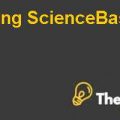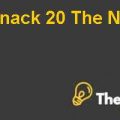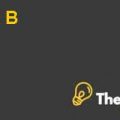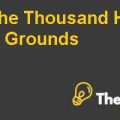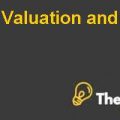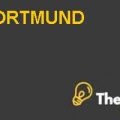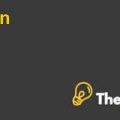K’S ESTATE PLANNING Case Solution
RETIREMENT PLAN:
After the couple has retired, they have planned to buy a ranch where they will raise some horses. They have planned out their retirement needs. They have assumed the inflation rate will remain constant at 3% after the retirement. The investments amount that they have placed for the retirement will give them 5.5% return. Other than this, they had invested in IRAs long before the creation of the company which will benefit them after their retirement.
EDUCATION PLAN:
Contributing to the Samantha’s educational fee, her parents have chosen 529plan and have contributed $3000 to it. According to them, the education fee will rise by 6% annually with the current college fee up to $38000 and the 529plan has given them $35000 from the initial amount. Other than the private college expenses, the couple has to plan for Samantha’s masters degree cost.
INVESTMENT FORMATION:
Now, to support their retirement, Stephan and Patty have decided to keep their capital in bonds dominated fund. The initial amount invested was $49000 which is now worth $57000. Their investment risk is moderate as they have to be assured of the earnings to support their lifestyle after retirement. They are also focusing on investing the proceeds from their current house and business. Investment breakup can be seen in exhibit 1.
K’S PLAN REVISION
REVISING INVESMENT PLAN:
According to the plan, the couple can take a moderate risk but as we can see the investment breakup, they have invested all of their amount in low risk bonds including risk-free treasury bills. According to the data we can see that the annual education inflation rate is 6% but if we calculate the average annual return from their current investment it’s just over 4%. Exhibit 1 shows the calculation. We have another option of diversification, which is, if we look at the S&P 500 index return its coming up to 7%. Therefore, we can have a fair mixture of stocks and bonds. This will be according to their risk appetite that’s at moderate level as compared to its current risk level which is quite low. Now because of this low risk level the return that it is giving away is less than the educational inflation rate and health inflation rate of 8%. Exhibit 2 shows the new diversified portfolio.
RETIREMEN PLAN:
Stephan and Patty want to retire and enjoy their life but they want it at the expense of selling off their business. When they sell off their business they have to face the issue of looking after their heirs and have to take care of their lifestyle as well. With the inflation rate going up and daughter’s education still pending, the couple shouldn’t sell off their business and just simply retire from their current position. By doing this, they will have the business and can enjoy their life by selling off their house. When they won’t retire they won’t have to worry about their daughter’s education plan plus their lifestyle expenses as all of their expenses will be taken care by their current business which they shouldn’t sell away.
Answer 4 A:
K’s are worried about the tax liability about future and they want to reduce it by investing in charitable work. According to the U.S law, they will receive a tax advantage if they invest in a gifted work. K’s are planning to retire from work and looking forward to enjoy for the rest of their life that’s why they don’t want to spend more right now and get rid of government taxes. If K’s decide to fund a charitable firm named CLAT (Charitable Lead Annuity Trust) that looks after animals. I would recommend they should go to invest till the point they can get maximum tax benefit because investment in CLAT won’t be a loss for them and it is a good opportunity to get maximum benefit without bearing a loss. For example, if K’s decide to invest $100000 in project they will get 5% return annually for next 10 years, if they get $5000 annually (5% of $100000) they will get a cash inflow of $50000 during next 10 years. At the end of the project, K’s will receive $58500 (58.5% of $100000). Addition of both amounts (58500+50000) it is still more than the amount they invested in charitable organization, despite of that they will get a tax deduction benefit from the government because they invested in a charity.
Answer 4 B:
K’s can use retirement funds to finance CLAT because all other assets are generating money. For example, all the investments in T-bills and bonds are generating return annually, properties are multiplying in their values with the time period. After retirement K’s will receive a huge amount of money on which they have to pay income tax so they can fund part of their money to CLAT in order to get tax reduction. On the other hand K’s can sell their Mercedes to fund CLAT, the family is quitting business to enjoy their life and want to save cash. Mercedes is an expensive vehicle and costs higher maintenance, a low cost vehicle can also fulfill same needs as they just want to enjoy their life. Cash inflow can help K’s by selling Mercedes to overcome charity fund problem.
Answer 4 C:
According to the terms and condition, it’s not mandatory for the creator to survive till tax advantage eligibility, that’s why if Stephen and Patty pass away in next 10 years their children would be eligible to get tax deduction benefit.
EXHIBTS
ANSWERS TO QUESTION 1
| Adjusted Gross Estates | |||||
| Stephen | Patty | ||||
| First to Die Gross Estates | $17,263,000.00 | $810,000.00 | |||
| Debt Allocation Per Spouse | $198,000.00 | $169,000.00 | |||
| Adjusted Gross Estates | $17,065,000.00 | $641,000.00 | |||
ANSWER TO QUESTION 2
| Marital & Charitable Bequests | |||
| STEPHAN | PATTY | ||
| Jointly-held Assets | $220,000.00 | $220,000.00 | |
| Contract in force | $719,000.00 | $247,000.00 | |
| Probate Marital | $16,126,000.00 | $63,000.00 | |
| Total Marital Deduction Bequest | $17,065,000.00 | $530,000.00 |
EXHIBIT1
| CURRENT INVESTMENTT | |||||
| NAME | annual return | BASIS | FMV(End of Last Year) | Yearly returns | |
| US Treasury | 1% | $10,000 | $12,000 | $100 | |
| Municipal Bonds | 4% | $25,000 | $28,000 | $1,000 | |
| Corporate Bonds(AAA) | 5.75% | $14,000 | $17,000 | $805 | |
| total | average=4% | $49,000 | $57,000 | $1,905 | |
EXHIBIT2
| REVISED INVESTMENT | |||
| NAME | annual return | Revised | |
| S&P 500 Index | 7% | 840 | |
| Treasury bond | 4% | 1120 | |
| Corporate Bonds(AAA) | 5.75% | 977.5 | |
| total | average=6% | $ 2,937.5 | |

